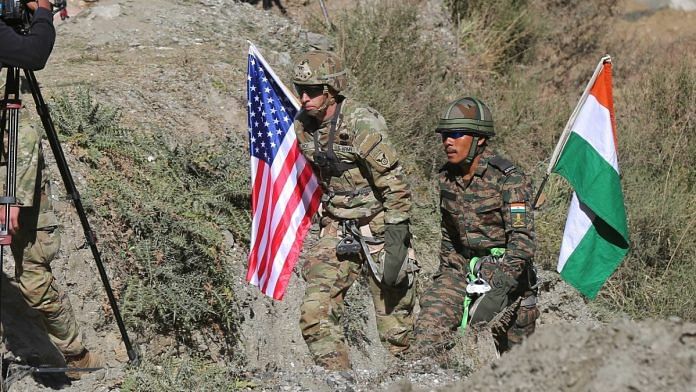Auli, Uttarakhand: For American soldiers taking part in the 18th edition of the annual Yudh Abhyas with India, the picturesque town of Auli in Uttarakhand gave them all they could hope for and more — a challenge to their abilities, a trip down memory lane to Vietnam, and dal tadka.
“It has been difficult at times. First week was definitely challenging. I was out of breath very quickly. But now that I am acclimatised, I can perform at exactly the same pace as I could at sea level,” US Army Specialist Solanka told ThePrint. The high altitude was a challenge for many of his colleagues, Solanka admitted.
That ‘getting more sunscreen would have been a wise decision’ had become a running joke among the American troops.
Over 300 US Army soldiers of 2nd Brigade of the 11th Airborne Division were in Auli, training with soldiers of the Indian Army’s Assam Regiment as part of the joint exercise which ended Friday.
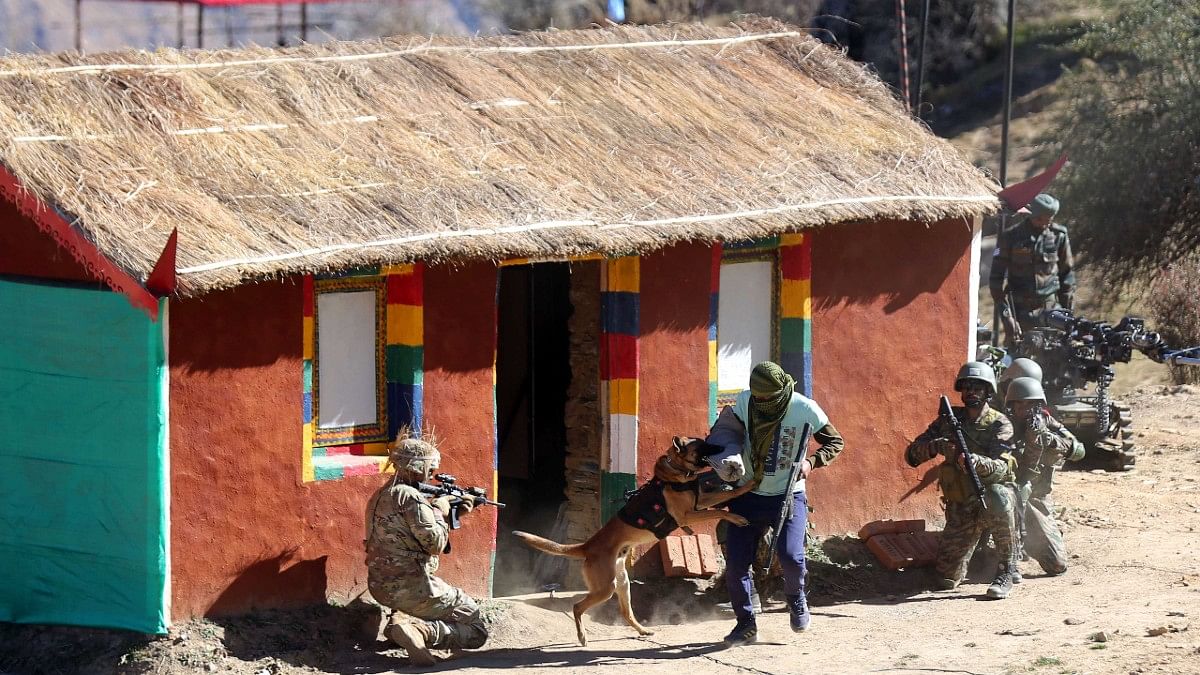
As Lieutenant Sulivan summed it up, the exercise was a “once in a lifetime experience” for the American troops since none of them had experienced high-altitude operations before.
Auli is home to the Indian Army’s first high-altitude Foreign Training Node. While the base camp here is situated at about 9,400 ft above sea level, the actual validation exercise takes place at about 12,000 ft.
The idea behind the Yudh Abhyas was to increase interoperability between the two armies and to allow them to exchange best practices.
Having witnessed multiple operational tactics of Indian soldiers with decades of experience in high-altitude warfare, Solanka said: “No side is better than the other. In some cases, our tactics are better and in some instances, we are learning from the Indians.”
While only a limited number of American soldiers were officially allowed to interact with the media, ThePrint spoke to a number of US troops off the record to get an understanding of the main takeaways from the exercise.
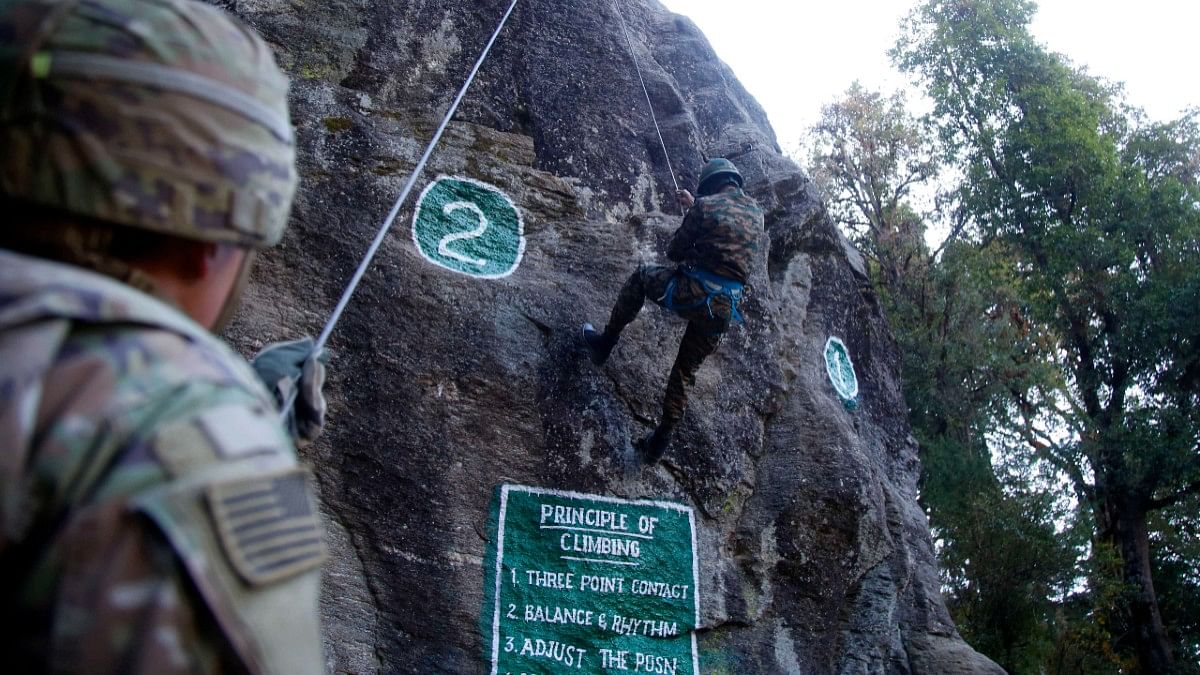
Soldiers during rock climbing exercise | Suraj Singh Bisht | ThePrint“One thing that really amazes me is that none of the Indian soldiers here has an experience of fewer than 12 years,” an American soldier told ThePrint, while also pointing out that the US Army is a volunteer force. A second soldier explained, “Our contracts are renewed every four or five years if we choose to stay.”
What the American soldiers found most fascinating was a display of freehand combat by Indian troops and trap lanes in jungle warfare.
“We rely a lot on technology and modern equipment. The Indian soldiers are hardy and they fight the way our earlier soldiers did,” said another American soldier, narrating what he saw as the difference in combat techniques of the two armies.
The soldier was referring to the trap lane set up in Auli for the exercise during which soldiers of the Assam Regiment showcased how booby traps can be laid by digging holes with nails in the bottom or pointed bamboo.
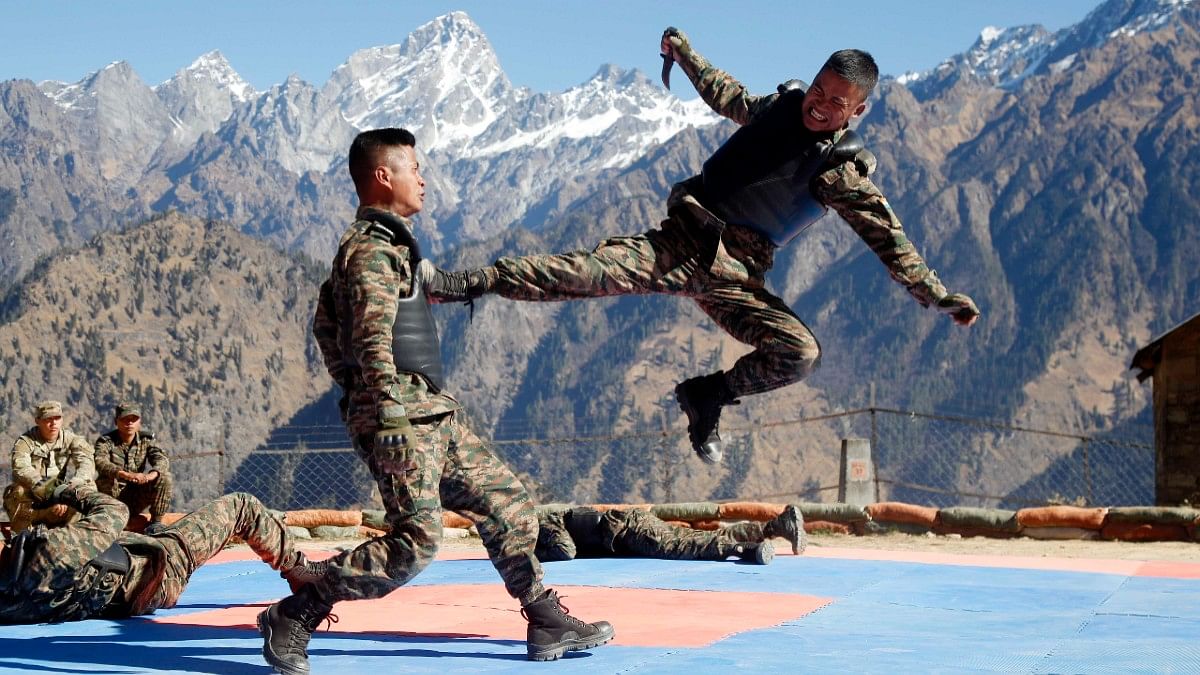
Indian soldiers engaged in free hand combat | Suraj Singh Bisht | ThePrint“This is like the Vietnam war our earlier soldiers fought,” quipped another American soldier.
Asked to picture a scenario wherein they might have to fight an adversary in jungle terrain, he responded: “Exactly why we are here. Learning best practices.”
Talking about the display of freehand combat by the Assam Regiment soldiers, Staff Sergeant Erricson said in a lighter vein, “We definitely don’t want to do hand-to-hand combat with these soldiers.”.
Of the other soldiers who spoke to ThePrint, one said that while they are also taught free-hand combat skills, any such actual combat is unlikely.
Reminded about the Galwan incident when Indian and Chinese troops reportedly fought with bare hands, the soldiers wondered why no firearms were used.
Also Read: Colonial St. George’s Cross dropped for Chhatrapati Shivaji’s seal on Indian Navy’s new flag
Biking plans & butter naan
Talking about his experience, one American soldier said on a lighter note, “This has been a great opportunity to come and learn so much. And of course to enjoy the Himalayas”.
Adding that the road to Auli is “very tricky”, the soldier said he was amazed when told that this was a highway compared to the tough terrain and roads one encounters when travelling in different parts of Ladakh and the Northeast.
Alluding to its reputation as a biker’s paradise, the soldier said he would be more than happy to visit Ladakh in the future with his bike.
A woman soldier said she enjoyed Indian food very much, identifying butter naan and dal tadka — which she described as a “spicy lentil soup” — as her favourites.
Difference in operational tactics
Illustrating the difference between the operating style of both armies, sources in the Indian Army said their counterparts in the US operate with a lot of focus on technology and heavy firepower.
“The US is blessed in a way because of its geographical location. It has not fought a war on its soil and hence, doesn’t bother too much about collateral damage. They come in with heavy bombardment before the actual troops, mostly mechanised forces, move in,” said one source.
“In our case, even at the Line of Control (with Pakistan), we focus on the opposite force and make sure that civilians are not targeted. Moreover, even in operations done internally, our focus is to avoid any kind of collateral damage.”
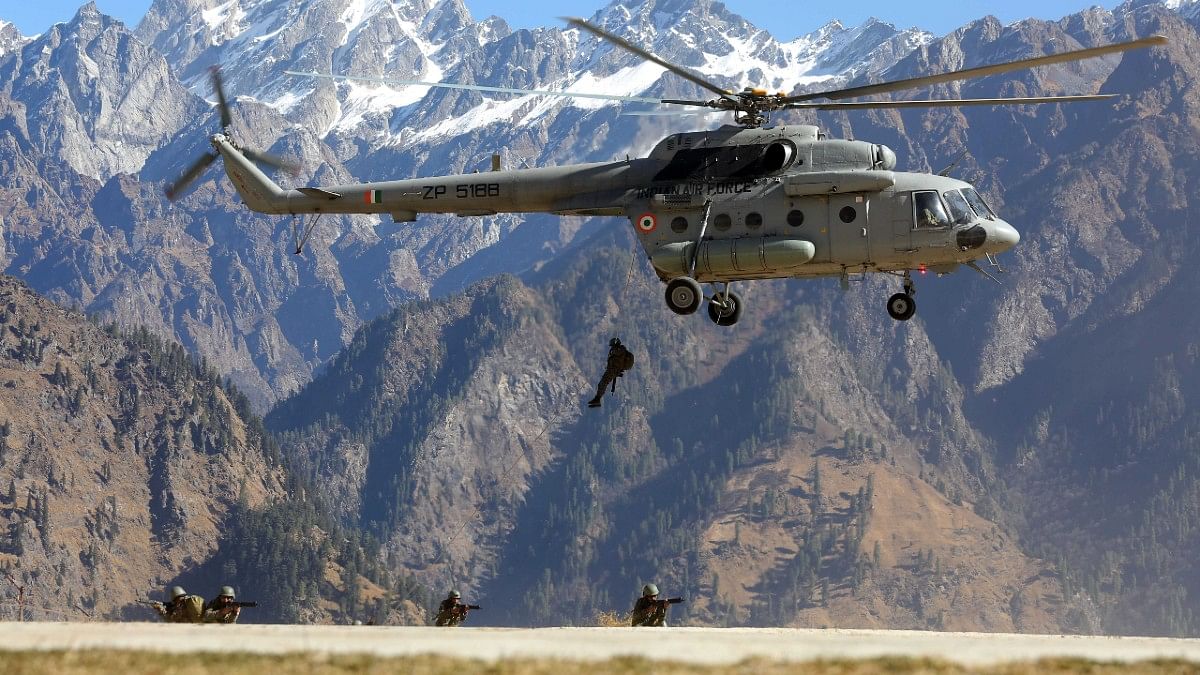
Another source told ThePrint that even when it comes to the actual deployment of American boots, the US Army Infantry has specialised forces to carry out specific operations.
“Our soldiers are tuned to carry out operations in our environment. The Americans train in a different way. It is only now that modern reconnaissance and intelligence gathering technology is being brought in to help our soldiers have better situational awareness, besides of course new snipers and rifles,” said the second source.
Adding, “While yes, the technology is indeed important and we are inducting more and more, you can’t take away the fact that when it comes to our western and northern neighbours, the hard traditional way of fighting still matters as far as troops on the ground are concerned.”
(Edited by Amrtansh Arora)
Also Read: Why military is more for asserting political will, not just about controlling territory


